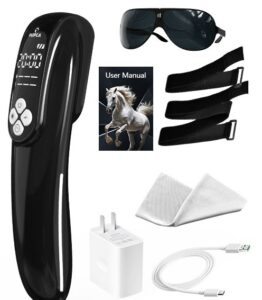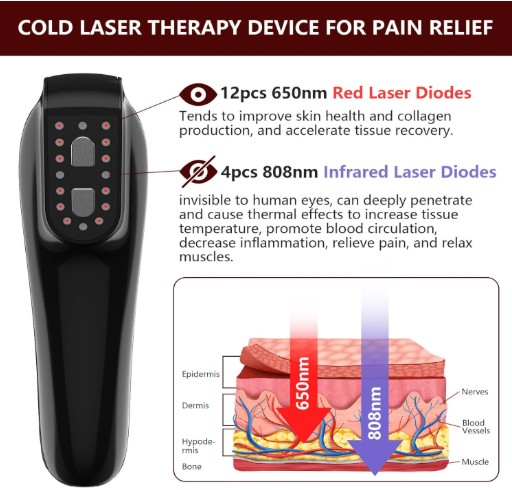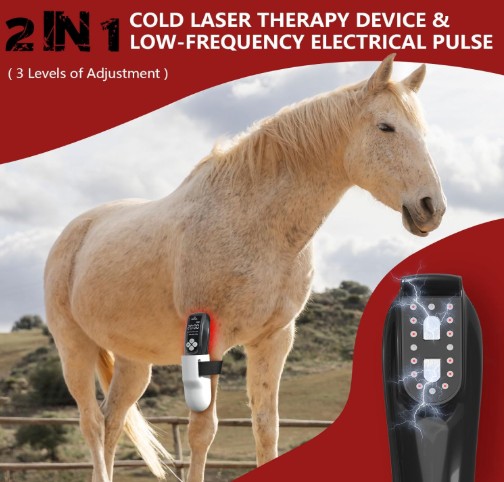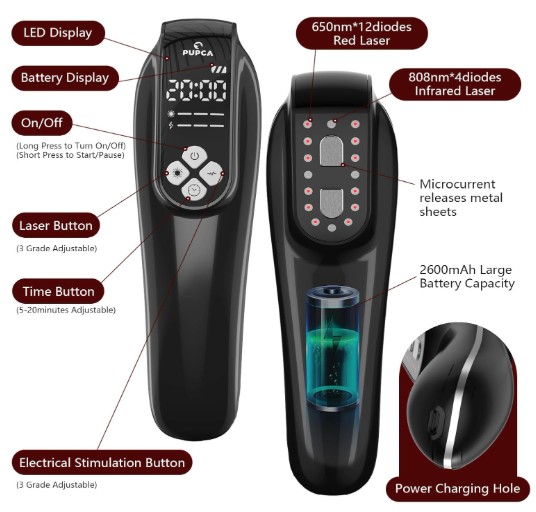Last Updated on 29/09/2025 by Liza Brits
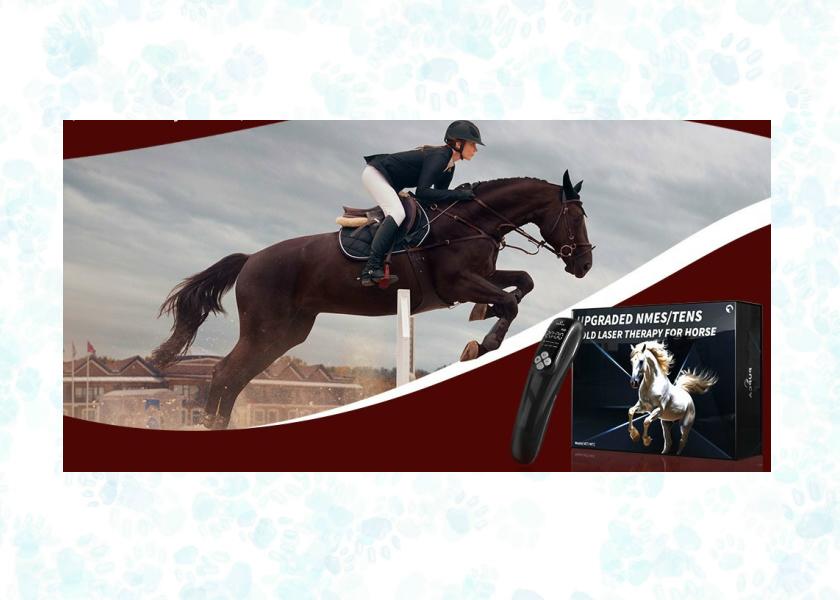
Disclosure
We share trusted product recommendations through affiliate partnerships with leading brands. This means when you find something you love and purchase through our links, we may earn a small commission (at no extra cost to you.) It’s our way of keeping the lights on while helping you discover the best smart pet tech products. 🐶😺
The PUPCA cold laser therapy device for horses combines cold laser therapy with electrical stimulation in a portable unit. While it’s designed primarily for horses, it can also be used on dogs, and with caution on smaller pets.
Horses are powerful, athletic animals, but their demanding lifestyles often lead to joint stress, tendon injuries, and chronic pain. From competitive show jumpers to retired companions, many horses deal with arthritis, soft tissue strains, and post-training soreness. Traditionally, treatment meant repeated vet visits, costly therapies, or medication with side effects. But thanks to technology, horse owners now have new options for at-home care.
But how does it work, and can it really help horses recover and stay sound? Let’s break it down.
What Is a Cold Laser Therapy Device for Horses?
Cold laser (or low-level laser) therapy uses light wavelengths to stimulate healing in tissues. This device works on two levels:
- 808nm near-infrared light – penetrates deep into tissues, joints, and organs, helping reduce inflammation and pain.
- 650nm red light – absorbed by the skin, boosting circulation and supporting wound healing.
For horses, this means targeted relief for conditions such as arthritis, tendon and ligament injuries, spinal pain, and even post-surgical recovery. Unlike medications, cold laser therapy is non-invasive, painless, and drug-free.
What Are NMES, TENS, and EMS?
Beyond laser therapy, the PUPCA device integrates three forms of electrical stimulation:
- TENS (Transcutaneous Electrical Nerve Stimulation): Uses mild electrical pulses to block pain signals and relax muscles.
- NMES (Neuromuscular Electrical Stimulation): Targets nerves to reduce pain and improve nerve activity.
- EMS (Electrical Muscle Stimulation): Helps maintain muscle tone, improve strength, and support tendon and ligament recovery.
For performance horses, this means faster recovery from training and competitions, while senior horses may find relief from chronic conditions like osteoarthritis or hip dysplasia.
Benefits for Horses and Owners
✔️ Drug-free pain relief – No risk of side effects.
✔️ Supports healing – Promotes circulation and tissue repair.
✔️ Convenience – Can be used at home, avoiding constant vet visits.
✔️ Cost savings – A one-time investment vs. repeated therapy sessions.
✔️ Multi-purpose – Suitable for horses and large pets (with caution for small pets).
Potential Limitations & Safety Notes
While promising, it’s important to keep expectations realistic:
- Results often require consistent use.
- It should be used as a complementary therapy, not a substitute for professional veterinary care.
- Owners must follow the manual carefully to avoid misuse.
- Electrical stimulation may be too strong for small animals, so extra caution is needed.
Pros and Cons of the PUPCA Cold Laser Therapy Device for Horses
Pros
- ✔️ Combines cold laser, TENS, NMES, and EMS in one device
- ✔️ Non-invasive, painless, and drug-free
- ✔️ Can reduce inflammation and improve circulation
- ✔️ Suitable for chronic issues (like arthritis) and acute injuries
- ✔️ Saves money compared to repeated vet therapy sessions
- ✔️ Portable and convenient for home use
Cons
- ❌ Requires consistent use for best results
- ❌ Effectiveness may vary depending on the horse and condition
- ❌ Not a replacement for professional veterinary care
- ❌ Electrical stimulation may be too strong for smaller pets
- ❌ Long-term durability depends on product quality and proper use
Is the PUPCA Cold Laser Device Worth It?
If you’re a horse owner dealing with arthritis, tendon issues, or post-training recovery, this device offers a modern, accessible solution. It combines three proven therapies, laser, TENS, and EMS into one unit, making it versatile for both acute injuries and long-term conditions.
That said, it’s best to:
- Consult with your veterinarian before starting treatment.
- Use it alongside other management strategies (good nutrition, rest, professional care).
- Check reviews and product reliability to ensure durability.
How It Works & Usage Guide
How to Use Cold Laser / NMES / TENS Safely & Effectively
| Step | What to Do | Why It Matters |
|---|---|---|
| 1. Vet Consultation First | Before using the device, have a veterinarian assess the animal’s condition (imaging, diagnosis). | Ensures you’re not masking a serious underlying problem; helps tailor treatment. |
| 2. Clean & Inspect the Area | Clean skin (remove dirt, mud, debris); check for wounds or sensitivity. | Ensures good light penetration / electrode contact; avoids infection. |
| 3. Choose the Correct Mode & Settings | Decide whether you’re using laser only, TENS/NMES/EMS, or a combination. Set frequency, intensity, session length according to animal size (horse vs. dog) and condition. | Overstimulation can cause discomfort; under-use may do nothing. |
| 4. Positioning & Application | Hold the device steady; ensure the applicator is perpendicular to the skin / over area of pain / tendon / joint etc. Use straps if provided. Avoid direct exposure to eyes. | Helps maximize effect and avoid harm. |
| 5. Duration & Frequency | (Example guideline) 5-20 minutes per session, 1-2 times daily or every other day, over several weeks. Adjust depending on response. | Most therapeutic modalities need repetition. |
| 6. Monitor Progress | Keep a log: pain signs, mobility, swelling, gait. If possible, take photos / videos over time. | Helps you see whether it’s working, or if settings need adjustment. |
| 7. Safety Checks & Contraindications | Avoid over wounds that are open unless advised; do not use over malignant tissue; use caution on small pets; avoid the eyes; consult vet about possible photosensitizing meds. | Prevents adverse effects. |
📚 Vet-Backed Research / Studies
| Study | What It Explores | Key Findings / Take-Away |
|---|---|---|
| “Thermal Effects of High-Intensity Laser Therapy on the Temporomandibular Joint Area in Clinically Healthy Racehorses” | Measures skin surface temperature change after HILT in horses. (MDPI) | After treatment, significant increase (~2 °C) in surface temperature; no adverse effects. Shows safety and thermal effect as a metric. (PMC) |
| “A Preliminary Study of the Influence of High Intensity Laser Therapy (HILT) on Skin Surface Temperature and Longissimus Dorsi Muscle Tone Changes in Thoroughbred Racehorses with Back Pain” | Uses HILT in horses with back pain. (MDPI) | Noted average 2.5 °C increase in skin surface temperature and reduction in muscle tension/pain on palpation. Suggests that HILT can reduce muscle pain in equines. (MDPI) |
| “Using Short Term of High Power Laser Therapy in Horse’s Tendon Injuries” | Horses with tendon injuries treated with high-power laser therapy. (PubMed) | Improvement shown in ultrasound scores and lameness; healing improved over time. Suggests laser therapy can help tendon repair. (PubMed) |
| “Low-level laser therapy and Chiropractic Care on Back Pain in Quarter Horses” | Back pain treated by laser therapy / chiropractic in horses. (PubMed) | Laser + chiropractic treatment produced improvements in pain, dysfunction, muscle tone. Best outcomes when used together. (PubMed) |
| “Effect of Transcutaneous Electrical Nerve Stimulation on Gait Parameters in Dogs with Osteoarthritis” | Dogs with osteoarthritis treated with TENS; gait evaluated. (PubMed) | In that study, TENS did not produce significant difference vs placebo in gait parameters. So evidence is mixed. (PubMed) |
| “Assessment of impulse duration thresholds for electrical stimulation of muscles (chronaxy) in dogs” | Investigated optimal pulse durations for NMES/TENS in dogs. (AVMA Journals) | Helps determine safe and effective settings for electrical stimulation in canine muscle, especially postural / small muscle groups. Useful for guiding device settings. (AVMA Journals) |
Reviews
“I bought it for my new gelding, he was super jumpy. He would see me, and I would walk by and pet his rump, and he would almost jump out of his skin. I gave us some time; we were both new to each other. But his sensitivity did not change very much. A friend mentioned cold laser therapy, so I bought a cold laser therapy device, in a couple weeks a big difference. I am impressed!”
“Works great, the horses love it.”
“Use this on my Dachshund every night for his back problems. Saves me so much money, was going to the vet a couple of times a week to have therapy and now I can do it at home. Easy to use and calms my dog down so he can relax.”
Conclusion
Smart technology is making its way into the equestrian world too. Devices like the PUPCA 2-in-1 cold laser therapy highlight how innovation can improve animal care, offering horses (and even dogs) a better chance at pain relief and faster recovery without heavy reliance on drugs or constant vet visits.
For horse owners looking to integrate modern tech into equine wellness, this device is worth exploring. It may not replace traditional veterinary treatment, but it could be the next step in smart equine care.
❓ Frequently Asked Questions (FAQ)
How soon will I see results?
Depending on the severity, consistency, and condition, improvements might appear in a few days (pain, swelling), but more subtle changes (muscle tone, strength) often take weeks of treatment.
Can I use this on dogs / small pets too?
Yes, many studies include dogs. But for small pets, you must use lower intensity, shorter sessions, appropriate electrode or laser settings. Electric stimulation in particular can overstimulate if settings are not adjusted.
Will it replace vet visits or medication?
It’s generally an adjunct therapy. It supports healing, alleviates pain, but in many cases vet care (diagnosis, professional treatments, imaging, medication) remains essential.
Are there any risks or side effects?
Possible discomfort from too-high intensity, overheating of tissue if used improperly, eye damage if directed at eyes, risk with certain medications/photosensitivity, possibly no benefit if the device is low-quality or used incorrectly.
What conditions respond best?
Evidence shows better responses in soft tissue injuries (tendons, ligaments), back pain, muscle soreness, arthritis-type pain, and superficial wounds. Deeper or chronic structural issues may need more intensive / professional therapy.
“`json { “@context”: “https://schema.org”, “@type”: “FAQPage”, “mainEntity”: [ { “@type”: “Question”, “name”: “How soon will I see results?”, “acceptedAnswer”: { “@type”: “Answer”, “text”: “Depending on the severity, consistency, and condition, improvements might appear in a few days (pain, swelling), but more subtle changes (muscle tone, strength) often take weeks of treatment.” } }, { “@type”: “Question”, “name”: “Can I use this on dogs / small pets too?”, “acceptedAnswer”: { “@type”: “Answer”, “text”: “Yes, many studies include dogs. But for small pets, you must use lower intensity, shorter sessions, and appropriate electrode or laser settings. Electric stimulation in particular can overstimulate if settings are not adjusted.” } }, { “@type”: “Question”, “name”: “Will it replace vet visits or medication?”, “acceptedAnswer”: { “@type”: “Answer”, “text”: “It’s generally an adjunct therapy. It supports healing and alleviates pain, but in many cases vet care such as diagnosis, professional treatments, imaging, and medication remains essential.” } }, { “@type”: “Question”, “name”: “Are there any risks or side effects?”, “acceptedAnswer”: { “@type”: “Answer”, “text”: “Possible discomfort from too-high intensity, overheating of tissue if used improperly, eye damage if directed at eyes, risks with certain medications or photosensitivity, and possibly no benefit if the device is low-quality or used incorrectly.” } }, { “@type”: “Question”, “name”: “What conditions respond best?”, “acceptedAnswer”: { “@type”: “Answer”, “text”: “Evidence shows better responses in soft tissue injuries (tendons, ligaments), back pain, muscle soreness, arthritis-type pain, and superficial wounds. Deeper or chronic structural issues may need more intensive or professional therapy.” } } ] } “`You may also like:
PetSmartify is a participant in the Amazon Services LLC Associates Program and other affiliate programs. We may earn a small commission from purchases (at NO additional cost to you)
Product prices and availability are accurate as of the time of publication and are subject to change. Any price and availability information displayed on Amazon or any other retailer’s website at the time of purchase will apply.

